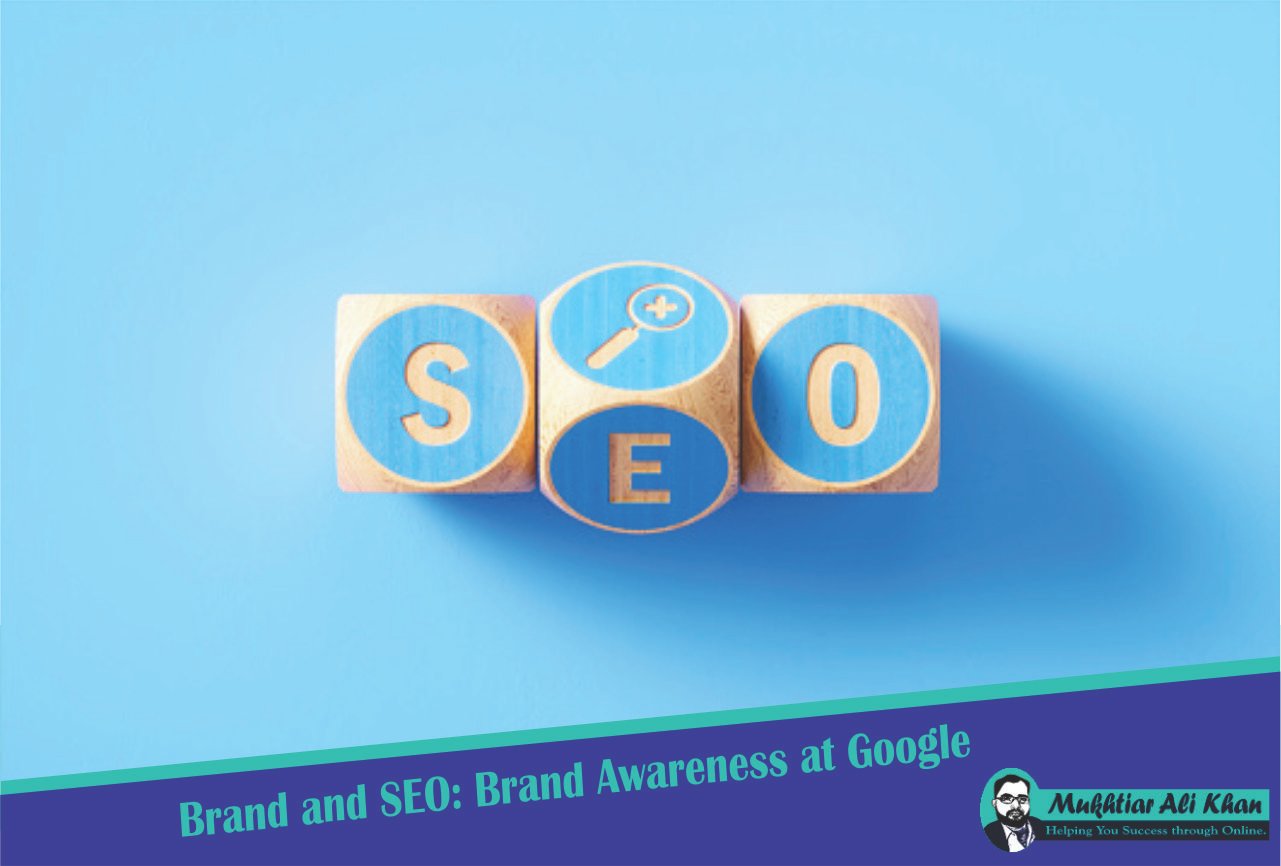It has long been known in public relations that a company’s brand is a large part of the general corporate identity. It is used for recognition and under certain circumstances can even become a status symbol for different product types.
At this point, every reader probably has specific brand awareness in mind. This already proves that certain companies are successful with their brand strength and in some cases also enjoy worldwide recognition.
A large part of Google’s success in the search engine market can also be attributed to an enormously strong brand – who hasn’t heard “Let me google that”?

The brand of a company or a website also plays a clear role in search engine optimization. Not only do people associate different products, properties, or other memories with a brand. Machines – in this case, the Googlebot – can also recognize brands on the Internet and assign certain factors. A website can often rank better simply because it belongs to a company with an effective branding strategy. In this article, I analyze what advantages brands bring to SEO as well.
How is a brand defined?
The clear separation of the classic brand and the brand awareness on the Internet is becoming less and less useful. The digitization of the marketing of many companies is blurring the boundaries more and more and makes the online presence of a brand also a sub-discipline of brand building.
A trademark summarizes all ideas that are evoked in the customer to differentiate one’s goods or services from those of the competition.
What functions does brand awareness fulfill?
It is obvious for the company to use a brand to differentiate it from its competitors. In this way, they protect their offer through customer acceptance and customer loyalty, especially in crises (e.g. Google updates) from competitive influences. To this end, they offer further information, such as on the quality of the products, to create trust and also create an emotional bond.
.
Branding is about making it easier for potential customers to process information through targeted marketing measures. Brands are a key psychological factor influencing purchasing behavior.
Brand awareness includes, among other things
- the logo
- the corporate design
- the corporate vision
- the way of storytelling
- and other promotional activities.
We do not want to go into the legal aspects of a trademark any further at this point.
So brand awareness is:
- The sum of associations among consumers
- unique at best
- a means of emotional attachment
- and often decisive for purchase.
Brands and dealers have always been keen observers of consumer buying habits, and they are adept at leveraging changes in these habits to their advantage. By closely monitoring and understanding shifts in consumer preferences and behaviors, they can tailor their marketing strategies and product offerings to align with the evolving needs and desires of their target audience.
Whether it’s adapting to the rise of online shopping or capitalizing on the growing trend of eco-consciousness, brands, and dealers use these changes as opportunities to enhance customer experiences and drive sales.
By staying attuned to shifting buying habits, they can identify emerging trends, innovate their products, and create personalized marketing campaigns that resonate with consumers on a deeper level. This proactive approach enables brands and dealers to not only meet the demands of the market but also to stay ahead of the competition, ultimately fostering long-lasting customer loyalty and business growth.
Brands in the SEO Context
The online realm presents unique opportunities for brands, distinct from traditional marketing. Through elements like organic traffic, search queries, and conversion data, a clear view emerges of brand performance and areas for enhancement.
No other avenue offers such insight into visitors’ search intent, making organic traffic analysis pivotal in deciphering whether searches were intrinsic or extrinsic, perhaps driven by marketing initiatives. This insight is a vital part of your SEO checklist for success.
In the field of SEO, we define brand awareness based on the following characteristics:
Search volume
The search volume shows how many search queries a term has reached in a certain period. For brand awareness, the search volume for its brand terms is of interest, since it can be used to estimate how high the level of interest in the brand is compared to the respective product type. This gives you information about the previous success of your brand awareness.
Sitelinks
If a brand is searched for on Google, the algorithm usually recognizes a connection between the brand and the content, products, or services typically offered. Below the actual result, subpages are linked that could most likely be of interest to the searcher when searching for a brand.
Brand Search & Traffic via Navigational Search
Brand searches are search queries that are directly aimed at the respective brand. These can be search queries that, in combination with products, already suggest a purchase intention, but navigational search queries are also not uncommon. The latter is primarily used for navigating the brand’s website.
Clicks and impressions
Clicks and impressions provide information about the number of users that a brand has reached in a certain period. They describe how many users saw a search result and ultimately clicked on it.
Mentions: Co-Citation and Co-Currency
Social channels often mention brands in direct relation to offers. This so-called co-occurrence shows that certain terms are often used together and are in a co-occurrence. On the other hand, one speaks of a co-citation when a website links two other pages that deal with the same topic. It doesn’t even have to be an actual hyperlink, it can also be a mention – at best in co-occurrence.
Backlink profile
The backlink profile is the sum of all currently existing external links to a brand’s website. If the brand name is often found in the anchor text of external links, it can be assumed that the brand has achieved a certain level of awareness.
Interest in the search market
Tools like Google Trends show how popular a specific search query is based on time and place. Trends for brands can also be identified here. For example, a brand can be more in demand in the summer months than in the winter.
Entries in Wikipedia
Trademarks that have achieved a certain relevance and general public interest are often reflected in Wikipedia entries.
How important are branding searches?
In a study, Moz analyzed the connection between top-ranking positions and
- domain authority
- backlinks
- and trademark searches
consists.
The domain authority is an indicator of the technical authority that a website has on certain topics. This is calculated in different ways, considering various factors.
In the case of backlinks, it was considered how much the average link accounts for in search queries and the resulting rankings.
Branded Search Volume, as the name suggests, is the impact of branded searches on good rankings – so what percentage of the search terms in top rankings is a branded search?
The study found that when looking at the top 10 rankings, there was a lead for domain authority, followed by branded search volume and, further afield, backlinks. This means that high domain authority is more related to top 20 rankings than branded keywords or domains with backlinks.
However, it should be emphasized that this does not mean that backlinks have the lowest importance for good rankings. Domain authority is related to a website’s backlink profile. This data just means that high domain authority is associated with top-20 rankings rather than backlinks and brand searches per se.
When analyzing the top 10 rankings, it becomes clear that branded search volume accounts for a significantly larger share here. Brand searches take the top spot in the top 10 compared to the other 2 factors. Only backlinks remain at the bottom of the comparison, while domain authority takes 2nd place here. So compared to the top 20, brands in the top 10 become far more important.
Domain authority includes factors such as domain trust, the quality of content or backlinks, and also the age of certain elements of a website. So while backlinks are part of the Domain Authority rating, they are not the only focus – there are other factors at play here. About these links, the domain authority specifically examines the quality of the average link to a website. High-quality backlinks thus increase the domain authority of a website.
Conclusion – Impact of SEO on Brand Awareness
Brand awareness can be identified and examined on the Internet using various criteria. Brands and brand links play a very important role in placements on the first search results page. Whether they are a direct ranking factor is not verifiable.
However, the connection between a strong brand and good rankings is obvious, and a high search volume for the brand name is a clear signal of this. Strong brand awareness represents a high level of authority in subject areas for Google, and this authority is valued positively. Therefore, increase the awareness of your brand on the Internet through professional search engine optimization.
In conclusion, the power of content analysis and keyword analysis plays a vital role in enhancing brand awareness through SEO. By carefully examining and optimizing the content on your website, you can ensure that it aligns with your brand identity and resonates with your target audience. Keyword analysis allows you to understand the search intent of your potential customers and incorporate relevant keywords that boost your visibility in search engine results.
By implementing effective SEO strategies, you can elevate your brand’s online presence, drive organic traffic, and ultimately increase brand recognition. Don’t miss out on the opportunity to leverage the power of SEO for your brand. Start your content and keyword analysis today and unlock the potential for exponential growth and success.





